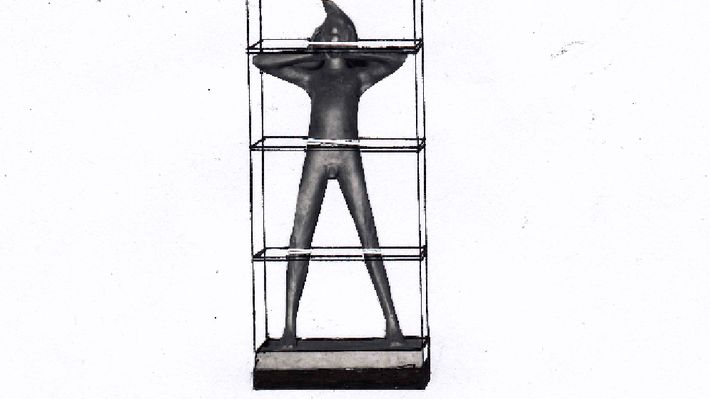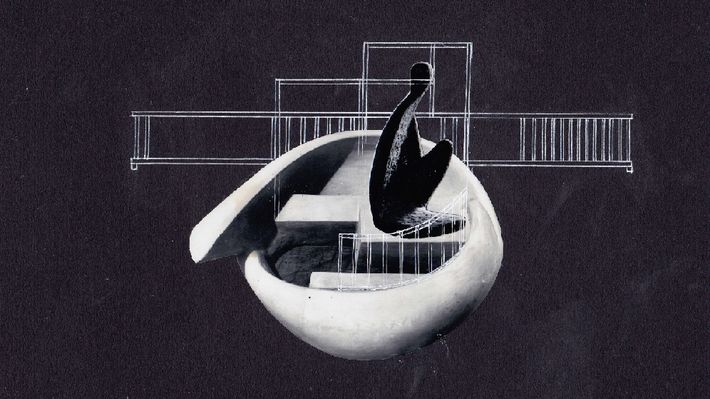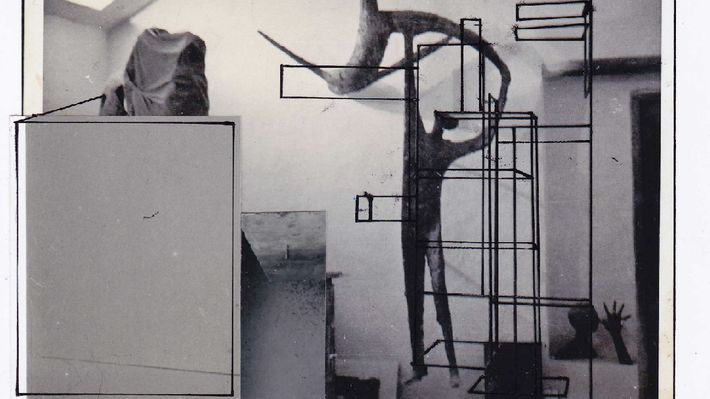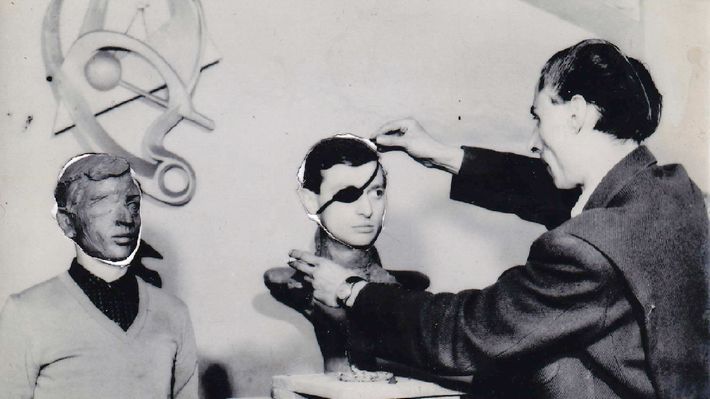Spící město
Giardini di Castello, 30122 Venice, Italy
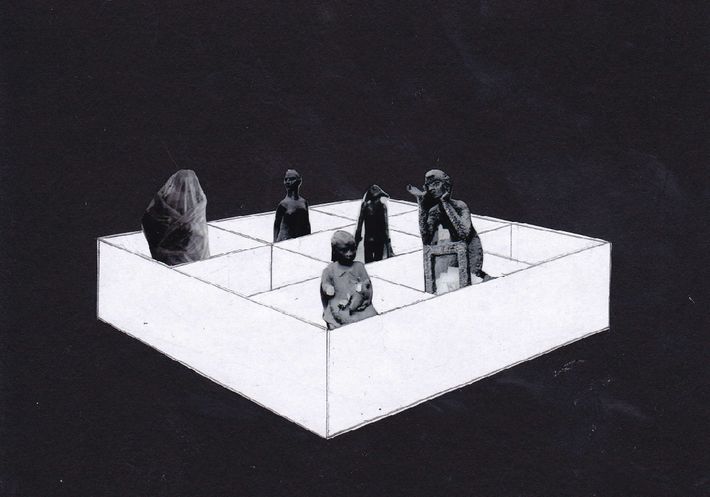
Pavilion of Czech and Slovak Republic at the 54th International Art Exhibition – la Biennale di Venezia
4 June–27 November, 2011
Professional Preview: 1–3 June, 2011 / 1.–3. června, 2011
Artist / umělec: Dominik Lang
Curator / kurátor: Yvona Ferencová
The Czech Ministry of Culture is pleased to announce that Dominik Lang will represent Czech and Slovak Republic at the 54th International Art Exhibition – la Biennale di Venezia, which will run from the 4th of June to the 27th of November 2011.
Ministervo kultury České republiky s potěšením oznamuje, že Dominik Lang bude reprezentovat Českou a Slovenskou republiku na 54. ročníku mezinárodního bienále výtvarného umění v Benátkách – La Biennale di Venezia, které bude veřejnosti otevřeno od 4. června do 27. listopadu 2011.
ENG: Dominik Lang’s (*1980) exhibition project The Sleeping City links two different sculptural approaches with various historical contexts against the background of an intimate family relationship. The presentation connects the works of two authors linked by a personal association, father and son, and thus creates a basis for developing a fictitious inter-generation dialogue. One of the project’s starting points is the fact that the works of Dominik Lang’s father, Jiří Lang (1927–1996), were “short-circuited“ by the absurdity of the times, i.e. of the forced uniformity of the 1950s society in the Soviet Block, and have remained – in spite of the initial laudatory epithets: „a good start“, „promising“ – deposited in the author’s studio, „incarcerated“ in its own times. The stifling atmosphere of a studio crowded with „sleeping“ statues, the social insulation, resignation, and apathy, but also one particular 1960 relief, called „The Sleeping City“: these are the sources for the title of D. Lang’s multi-layered project. In his site-specific installation, he puts forth a hypothetical model of a never-realized exhibition: he handles the works of the generationally antecedent artist as a material for formative activity, torn out of its historical context, as phantoms of times gone, inset within new scenes and constellations. In doing this he stages an uncompromising image of the „impossibility“ enforced by the given circumstances.
Another reason why the presentation is defined as a „model of an exhibition“ is that the author reverses and shatters in it the very format of an exhibition. D. Lang purposefully borrows standard exhibiting procedures and patterns in order to demonstrate their dysfunctionality and pushes this incommensurability to the very limit, towards a „violation“ of the exhibited works. Together with the impossibility of breaking out of the shackles of historical circumstances, D. Lang uncovers and lets us feel another impossibility – that of handling a material which is both historical and purely personal in an authentic and coherent manner. The resulting exhibition is a spatial biography, a visualisation of the relationship between the two artists as well as a portrait of the specific situation of the Czechs both before the fall of Communism and afterwards; and by its manner of fulfilling these functions it refers to the limits of a balanced, non-tendentious attitude towards one’s own personal and social past.
The architectonic setting of the pavilion, works of art, documents and characteristic objects of the times, personal items as well as pieces of the habitat and the work-space as his father’s immediate surroundings, documentary photographs and exhibition patterns and principles taken both from the past and the present: these are the elements intuitively inset within a complex collage of relationships that permeate and criss-cross various historical and ideological contexts. In his artistic work thus far, D. Lang has typically presented himself in the double role of author and architect, a role that includes manipulating already-finished material and composing new wholes out of it. In the Sleeping City project, D. Lang pushes this basic pattern towards greater complexity, a larger scope as well as a radical strengthening of personal and emotional engagement. D. Lang’s working method has thus become more effective but also more risky, as the material is no longer some object or the interior of an artistic institution, as it was before, but rather the work of another artist, and moreover one that is intimately known to him. By means of assorted objects, artistic works and assembled documents, D. Lang allows us to both enter the past and to uncover the volatile intimacy of moments opening „beyond time“. As the author says: „The Sleeping City is a visualised meditation on the manner of how we create our own personal history by taking over and yet modifying the established ways of perceiving and assessing the past. The project opens up an autonomous space for raising the question of all that can turn into a cause of failures, incomprehension, and dreams never come true. It makes us wonder how profoundly a given social and political situation can influence and determine an individual’s life and affect his or her work that then survives in a sort of vacuum, an airless space in between the past to which it is bound by the time of its creation and the present that has not yet found a place for it.“
The Sleeping City project is being realized in the Czechoslovak Pavilion after a series of clashes surrounding the selection process. Even though it was this project that the commission charged with assigning the pavilion selected, the Director of the National Gallery made the autocratic appointment of a different project – whose authors, however, refused to realize the plan, thus protesting the deviant procedure. In the cul-de-sac thus reached, the Czech presentation was transferred under the supervision of the Czech Ministry of Culture, which then re-selected the Sleeping City project, as originally recommended by the commission of experts.
CZ: Výstavní projekt Spící město Dominika Langa /*1980/ spojuje dva sochařské přístupy a odlišné dobové kontexty na půdorysu úzkého rodinného vztahu. Prezentace propojující dílo dvou umělců spjatých osobní vazbou /otec-syn/ vytváří bázi pro rozvinutí fiktivního mezigeneračního dialogu. Jedním z východisek projektu je skutečnost, že tvorba Jiřího Langa /1927–1996/, autorova otce, zkratovaná absurdností žité přítomnosti /normalizované společnosti padesátých let/, věnčená počátečním „slibné“ a „nadějné“, zůstala dodnes bez odezvy deponovaná v ateliéru umělce. Dusivá atmosféra ateliéru přeplněného „spícími” sochami, společenská izolovanost, rezignace a apatie, ale i konkrétní reliéf z roku 1960 pojmenovaný “Spící město” daly název Langovu mnohovrstevnatému projektu. Svou site-specific instalací Lang vytváří hypotetický model nerealizované výstavy, na níž zachází s dílem generačně staršího umělce jako s tvárným materiálem vytrženým z historického kontextu; jako s fantomy zašlých časů, které zasazuje do nových scén a uskupení. Důmyslně inscenuje nesmlouvavý obraz okolnostmi vynucené „nemožnosti”. Hypotézy, snaha postihnout výchozí představy, inspirace, sny a záměry se stávají základem pro komponování výstavního celku i nakládání s použitým materiálem.
Autor definuje svou prezentaci jako “model výstavy” také proto, že v ní převrací a znejisťuje samotný výstavní formát. Cíleně si vypůjčuje standardní výstavnické postupy a formy, aby ukázal jejich disfunkčnost, a tuto nesouměřitelnost dovádí až po krajní mez, jíž je “znásilnění” vystavených děl. Současně s nemožností sebeprosazení díla v sevření dobových poměrů nám odkrývá a dává pocítit další nemožnost: nemožnost autentického a koherentního nakládání s historickou a současně ryze osobní látkou. Upozorňuje na úskalí práce s nezpracovaným a ve své době „uvězněným” dílem. Výstavní půdorys se pro něj stává jakousi mřížkou, do níž dosazuje a situuje díla, dobové dokumenty, osobní předměty i výstavní prvky a fragmenty architektury, aby tak vytvořil nové vazby a konfigurace, “aktualizoval obsah textu” a tak dodatečně odkryl možnosti nahlížení na již uzavřené otcovo dílo. Výstava je prostorovým životopisem, vizualizovaným vztahem obou tvůrců, právě tak jako portrétem specifické české situace před pádem komunismu a po něm; způsobem, jakým naplňuje tyto funkce, zároveň poukazuje na nemožnost vyváženého, nezaujatého postoje k vlastní minulosti, osobní i společenské.
Architektura pavilonu, umělecká díla, dobové reálie, osobní předměty a části obytného a pracovního prostoru z otcova nejbližšího okolí, dokumentární fotografie, formy a výstavní principy převzaté z minulosti, ale i současnosti jsou elementy intuitivně vsazené do spletité koláže vazeb prolínajících se napříč historickými a ideologickými kontexty. Dominik Lang vede fiktivní dialog odehrávající se v mnoha rovinách. V dosavadní tvorbě Lang typicky vystupuje v dvojroli autor-architekt, k níž patří manipulace s již hotovým materiálem a jeho skládání do nových celků. Ve výstavě Spící město toto základní schéma posouvá směrem k větší komplexnosti, k rozšíření záběru, ale i k radikálnímu posílení osobně-emotivní zainteresovanosti. Langova pracovní metoda je nyní působivější, ale i riskantnější, protože materiálem není užitý předmět či interiér umělecké instituce, jak tomu bylo doposud, ale dílo jiného umělce, které důvěrně zná. Dominik Lang nám prostřednictvím vybraných objektů, děl a nashromážděných dokumentů dovoluje vstoupit do minulosti, ale i odhalit těkavou blízkost okamžiků zejících „mimo čas“. Autorovými slovy: „Projekt Spící město pro československý pavilon je vizualizovanou reflexí toho, jak utváříme vlastní historii, jak přejímáme a současně měníme zažité způsoby vnímání a hodnocení minulosti. Vytváří svébytný prostor pro nastolení otázky, co všechno může být příčinou nezdarů, nepochopení a neuskutečněných snů. Jak hluboce může daná společenská a politická situace ovlivnit a určit život jednotlivce a poznamenat jeho dílo, které pak přežívá v jakémsi vakuu, ve vzduchoprázném prostoru mezi minulostí, s níž je svázáno dobou svého vzniku, a současností, v níž pro ně ještě nebylo nalezeno místo.”

